In the modern world, there has never been a greater need for fast internet and reliable communication systems than now. Among the many technological advancements of our age is fiber optic technology, which provides an unprecedentedly rapid and efficient way to transmit data. The purpose of this article is to discuss what the 800 Fiber Optic Transceiver can do for those living in North Little Rock. We will be covering everything from its technical specifications right down to its uses so that you can understand how it works better; also, we will talk about where else this kind of advanced technology could be applied as well as why such things are necessary in today’s society. This complete guide should serve both as an eye-opener for those who love all things tech and a point of reference for local residents hoping to improve their internet infrastructure with fibre optics.
What does 800 Fiber Optic Drive mean?

An Introduction to 800 Fiber Optic Drive
The 800 Fiber Optic Drive is a powerful transceiver designed for advanced data communication networks. It works well in long-distance communication systems with low delay and high data accuracy. This transceiver complies with different data protocols and can be easily integrated into existing fiber optic networks. With its rugged construction and low power consumption, it provides a dependable and cost-effective solution for improving internet speed and network reliability in North Little Rock.
North Little Rock Location And Facilities
Located within North Little Rock, the 800 Fiber Optic Drive transceiver ensures easy accessibility by local residents. The supporting facilities are built with modern infrastructure that guarantees maximum operational efficiency. These installations have sophisticated cooling systems as well as backup power supplies which significantly reduce chances of experiencing downtime. More so, there are skilled maintenance teams nearby who offer quick response services whenever required. Therefore, this strategic position, plus its all-around facility configuration, makes it a trustworthy option for community-based communication needs.
800 Fiber vs 800g: What You Should Know
800 Fiber refers to a fiber optic network that has the ability to handle up to 800 gigabits per second (Gbps) of data transmission speed. This large bandwidth capacity is essential for current data-intensive applications such as high-definition video streaming, virtual reality, or even massive cloud computing, among others. Designed specifically for these demanding data rates, the 800 Fiber Optic Drive transceiver delivers better performance and reliability than any other device of its kind would do. It optimizes new technologies alongside efficient designs, thereby ensuring the least signal attenuation together with the highest possible integrity over longer distances, thus making it perfect for expanding network capacity at large distances while enhancing general connectivity as well.
Why Choose Fiber Optic Over Old Fashioned Cables?
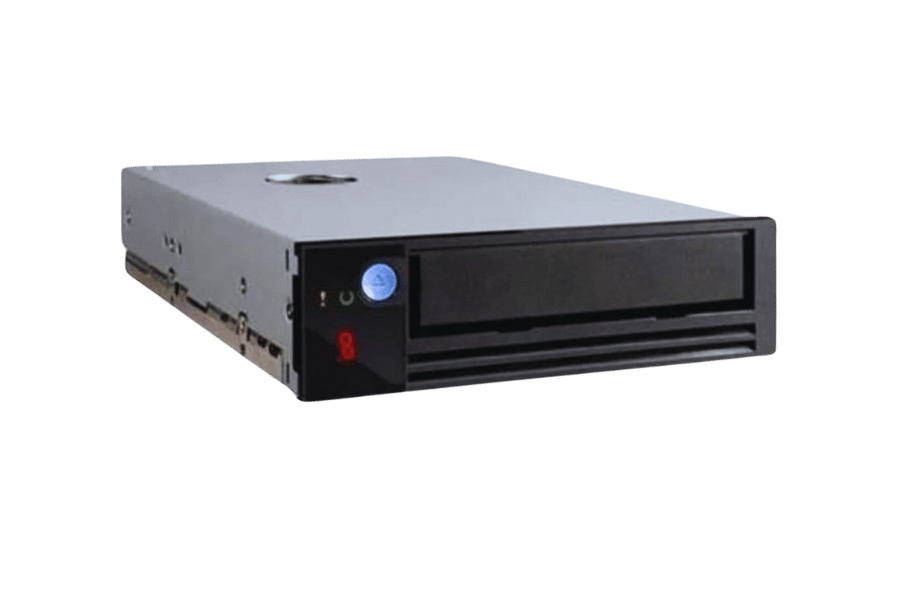
Advantages of Fiber Optic Cable
There are many advantages of using fiber optic cables over traditional copper ones. First, they have much higher bandwidth, which means faster data transmission rates can be achieved, and this is also able to cope with the increasing demand for high-speed internet as well as multimedia services frequently requiring 40g capabilities. Second, fiber optics does not suffer from signal loss over long distances, therefore making them ideal for long-haul communication networks where data rates can go up to 40g. Thirdly, electromagnetic interference affects them less than any other type therefore ensuring reliable and consistent information transfer at all times. Apart from that, they are lighter in weight, being slimmer diameter-wise, thus making installation easier while at the same time reducing maintenance costs since more fibers fit into ducts or conduits compared to copper cables. Last but not least important is security enhancement through difficulty in tapping into such kind of wires than their copper counterparts, hence becoming the preferred option for secure communications.
High Bandwidth and Data Rates
The ability to provide fast efficient communication has been made possible by high levels of bandwidth together with data rates offered by optic fibers which meet requirements set by modern digital communication systems like those used in offices or homes today. This means that large volumes of information can be sent within a very short period, thereby saving time, especially when there are urgent needs. In addition, these cables support heavy loads without experiencing any form of latency because they are designed for high precision during lightwave transmission so network operations would always perform optimally even if huge amounts need to be transferred quickly, thus making them perfect for streaming videos live on the internet among other things like cloud computing or virtual reality gaming platforms where rapid massive file transfers occur frequently. Moreover, wider bands enable fewer mistakes plus better integrity throughout longer spans.
Reliability and Durability of Fiber Optic Networks
Fiber optic networks have proven themselves over time as being reliable and durable due to their ability to withstand various external interferences coupled with different environmental conditions. For instance, copper cables may fail when subjected to electromagnetic or radio frequency disturbances, but this is not the case with fibers because they are immune, hence always ensuring smooth continuity in communication channels at all times. Furthermore, weather changes do not affect them much, and neither does physical harm have serious impacts on such wires; therefore, there will be less need for repairs since these factors contribute greatly towards shortening lifespan besides increasing costs associated with maintaining them at maximum capacity over extended periods. Additionally, the materials used are resistant to corrosion and wear, thus making them last long without getting damaged thereby being capable of supporting speeds in bits per second, which no other alternative can match. Based on these characteristics, fiber optic networks remain an unbeatable solution that guarantees uninterrupted, reliable data transmission.
How to Make the Most of 800 Fiber Optic Drive

Efficient Implementation Strategies
Efficient implementation of fiber optic networks begins with careful planning and accurate mapping of the deployment area. This involves analyzing the geographical terrain as well as existing infrastructure, which not only saves on time but also resources, particularly for 40g networks that run at high speeds. Advanced deployment methods like micro-trenching and aerial fiber installation can be used for faster installations and cost reduction. It is important to train personnel on proper installation procedures alongside using automated testing equipment that will help achieve higher standards of installations capable of handling 40g speeds, among others. These measures make the process more efficient.
Integration with Your Data Center
There are several things you need to put into consideration when integrating your data center with a fiber optic network so as to ensure it performs at its best while remaining scalable enough even in future scenarios where demand may rise significantly beyond what we currently know (bits). First, look at how compatible is this new service going to be vis-a-vis our current infrastructural setup. Will there be any need to upgrade anything based on speed requirements alone? What about quality transceivers and patch panels which should always form part o them in order to create smooth connections all through without signal loss whatsoever? Have we taken cable management seriously by avoiding situations where physical stress weakens signals passing along cables, thereby leading to eventual breakdowns somewhere along those lines unconsciously? Do monitoring tools exist within this system itself, or do they need to be sourced from outside vendors who provide such services commonly referred to by some people as Network Interface Cards (NICs)? Finally, is there an option within such systems that caters for scalability by design i.e., without causing massive disruptions during expansions over time especially when talking about large scale projects involving multiple users simultaneously accessing?. If yes, then these steps will ensure robustness, in addition to future proof against Fiber.
Using OneAdvisor 800 for Peak Performance
To achieve the best results with OneAdvisor 800 follow these steps:
- Setup and Configuration: Make sure device settings are done properly according to the manufacturer’s instructions. Use software tools provided for initial setup so that your system can handle higher speeds measured in bits per second.
- Testing Procedures: There should be continuous use of auto tests capabilities for wider network diagnosis coverage. Tests should be done frequently to identify areas with potential issues which might have gone undetected during previous test runs.
- Data Analysis: Interpret test results through analytics features available on OneAdvisor in order to make informed decisions regarding network health and performance monitoring measures needed thereafter.
- Firmware Updates: Keep device firmware up-to-date this way one gets access new features plus patches which enhance security levels thus reducing chances unauthorized persons gaining entry into systems using outdated ones thereby compromising entire infrastructures connected via said devices.
- Maintenance: Carry out regular servicing checks aimed at ensuring that equipment remains productive over extended periods without breakdowns occurring abruptly leading too downtime costs associated therewith being incurred unnecessarily due lack preventive maintenance schedules being adhered too strictly by those responsible for doing so.
Based on these straightforward hints, it will become possible for you to get maximum value from your Fiber Optic Drive 800 even if it operates at speeds such as 40g.
What are the Main Parts of Fiber Optic Systems?

Fiber types and their uses
- Single-Mode Fiber (SMF): A single-mode fiber has an average core diameter of 8-10 micrometers, which allows light to propagate directly down the fiber with little dispersion. It is suitable for long-haul telecommunications and high-speed data transmission systems because it can support higher bandwidths over longer distances than multimode fiber.
- Multimode Fiber (MMF): Multimode fibers have larger core diameters ranging from 50 to 62.5 micrometers, enabling multiple light modes to propagate. MMFs are best suited for short-reach applications such as local area networks (LANs) and data centers due to their capability of carrying high data rates over shorter distances.
- Plastic Optical Fiber (POF): Plastic optical fibers use polymer-based core/cladding materials that offer greater flexibility and ease of handling compared to traditional glass fibers. POF is mainly employed in home networking, automotive communications, and consumer electronics where robustness takes precedence over long-distance transmission capability.
Knowing these different types of fibers will help you choose the right fiber optic system for your specific application needs so that you achieve maximum performance and efficiency.
Understanding Fiber Optic Transceivers
Fiber optic transceivers are indispensable components in any fiber optic communication system since they act both as transmitters and receivers. These devices convert electrical signals into optical ones for transmission through optical fibers; then at the receiving end, they change back the received optical signals into electrical form again using a photodetector which converts them back into electricity.
There exist several kinds of fiber optic transceivers including Single-Mode Transceivers (SMT) and Multimode Transceivers (MMT) depending on what type of fiber they work with. For example, SMTs transmit over long distances while MMTs cover shorter ranges. Furthermore, transceivers may support different data rates and their usage is determined by required bandwidths and distances.
By choosing the right fiber optic transceiver, you can ensure compatibility with the fiber type used thus achieving efficient data transmission while keeping your network infrastructure highly performant and reliable.
The Role of Pluggable Optics in High-Speed Networks
Pluggable optics or pluggable transceivers are essential for enabling high-speed network connectivity. These modular devices can be inserted into switches, routers, etc., allowing scalability and flexibility to meet diverse data rate needs without making permanent changes to the infrastructure. They support various data rates from 1Gbps up to 400Gbps and beyond, which caters to different network requirements. Additionally, they are designed to work with multiple communication protocols as well as fiber types, thus ensuring seamless integration into existing networks. Such versatility makes them ideal for upgrading and maintaining high-performance networks with little downtime involved.
How could 800 fiber get together with the need for higher bandwidth?

Supporting high-capacity and high-speed networks
The reason why it can respond to today’s network needs is that 800 fiber offers a lot of capacity and speed. It is built on an advanced architecture that allows scaling data transmission on large distances while still maintaining its performance excellence. This technology uses dense wavelength division multiplexing (DWDM) to increase the amount of information that can go through one fiber optic cable, thereby significantly enhancing network throughput. Furthermore, this type of optic cable has been designed in such a way that it works effectively with already existing infrastructures, making it easily upgradeable where necessary for rates of up to 40gbs. These aspects guarantee strong connections, which are essential for running applications in data-intensive environments.
Creating efficient connection options
It can also create different connectivity opportunities by supporting various transceivers and network equipment as well as being able to be deployed flexibly thanks to compatibility features offered by 800 fibers. When designing networks, one may consider using single-mode or multi-mode fibers since they are supported by this type of cable. Additionally, it perfectly fits into standard communication protocols so that there is a wider interconnection among different sections within a given system. Such systems should utilize advanced techniques like those employed in modulation methods, which improve data transfer efficiency, thereby reducing delays experienced during transmission leading to loss packets, hence ensuring reliability along any path taken by signals meant for achieving maximum speed over limited distances or large capacities across wide areas.
Scalability and future-proofing technology with respect to fiber optics
In order to cater to the ever-increasing demand brought about by advancing technologies, there must be scalability features coupled with future-proofing capabilities inherent in fiber optics themselves. This means that 800 fiber provides room for expansion when required without necessarily having massive changes made to infrastructure due to its ability to accommodate higher rates of data transfer, thus enabling it to serve emerging applications plus meet upcoming requirements concerning networks. Moreover, it incorporates other enhancements like dense wave division multiplexing (DWDM), which can greatly enhance performance at present but also serve as upgrades for upcoming days since they provide the necessary groundwork to enhance current network capabilities. Such being the case, this kind of cable is supple enough to withstand long-term planning for growth in any system up to 40gbs.
Common Questions about 800 Fiber Optic Drive
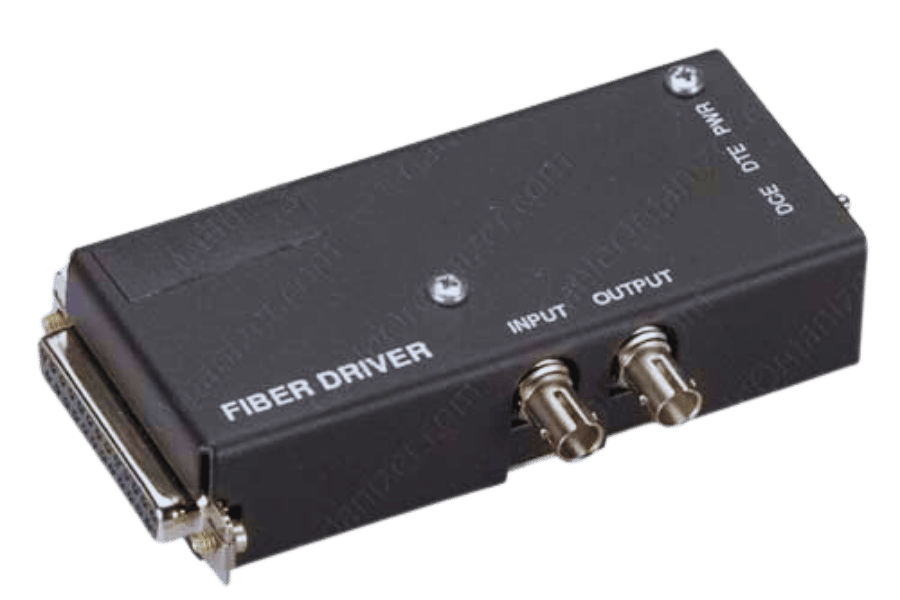
What are the services available in 800 Fiber Optic Drive?
There is a wide range of services offered by 800 Fiber Optic Drive that cater to all networking needs. These include fast internet connection, integration with data centers, cloud services, and dedicated fiber links for businesses, among others. Moreover, it provides managed network services such as monitoring networks, support, and maintenance to enhance their efficiency. They serve various industries like the education sector and the business industry, thus having communication solutions that are scalable enough to meet the future demands of any organization.
How do I contact or visit 800 Fiber Optic Drive?
In order to reach us at 800 Fiber Optic Drive call our customer service hotline on (555)123-4567 or send an email through contact@800fiberoptic.com. For visits come to 123 Technology Lane Tech City ST 78901 between Monday and Friday from 9:00am -5:00pm but make sure you book earlier so that we can have enough time guide you around during consultation hours which suits best your requirements.
Data Centers in North Little Rock Insights
The data centers located in North Little Rock play a very significant role not only within the city itself but also within its neighborhood as far as technological infrastructure is concerned. These centers have put in place advanced cooling systems, highly secured premises, and redundant power supplies, ensuring continuous operations and safeguarding data stored there. Different types of services can be found here, including colocation hosting providers, disaster recovery sites, public cloud storage facilities, etcetera. Being connected by high-speed fiber optics cable lines together with state-of-the-art equipment, they offer reliable, scalable, secure solution that meets current business needs.
Reference Sources

Frequently Asked Questions (FAQs)
Q: What is an 800 Fiber Optic Transceiver and how is it used in North Little Rock?
A: An 800 Fiber Optic Transceiver refers to a gadget that has been created for utilization within high-speed networks so as to communicate information over long distances through light signals that are transmitted through optical fibers. In North Little Rock, this device is widely used to enable fast and reliable internet connectivity.
Q: What are the benefits of using an 800 Fiber Optic Transceiver at 800 Fiber Optic Dr, AR 72117?
A: Some advantages are higher data transfer speeds, more dependable Ethernet connections, and better network performance overall. There is less signal loss with these transceivers as well as increased bandwidth capability which is especially important for businesses at or near 800 Fiber Optic Dr, AR 72117.
Q: How does the 800 Fiber Optic Transceiver manage high-speed networks such as 400G and 100G?
A: Supporting data rates between one hundred gigabits per second (Gbps) up to four hundred gigabits per second allows it handle large volume of traffic with low delay; thus making possible its use on infrastructure meant for connecting systems that require very fast transmissions.
Q: What role does form factor play in the functionality of 800 Fiber Optic Transceivers?
A: The size and compatibility of the transceiver with networking equipment is determined by its form factor. Compact forms like QSFP-DD allow more ports per unit area which leads to higher density while reducing power consumption; all these factors being necessary for maintaining strong optic networks capable of handling forty gbit/s links.
Q: How are the 800 Fiber Optic Transceivers designed for use with Ethernet applications?
A: They have been engineered following Ethernet networking standards so that they can easily blend into existing Ethernet infrastructures. This design guarantees reliability across different network environments because it ensures that there is interoperability between various devices within an Ethernet setup.
Q: What firms can profit from the use of 800 fiber optic transceivers in North Little Rock?
A: Many businesses such as US Foods that handle massive amounts of data stand to gain a lot. For such enterprises, high-speed and dependable network solutions are essential for efficient daily operations.
Q: Why is it important to upgrade optical networks in Little Rock with an 800 fiber optic transceiver?
A: The reason why one should upgrade to an 800 fiber optic transceiver is that this will enable them meet the increasing demand for speed and bandwidth necessary for data transmission through optical networks which has become very vital because it helps people connect more within their locality.
Q: What do you need to install an 800 fiber optic transceiver?
A: Installation may require compatible network infrastructures, appropriate transceiver slots, or sometimes experts’ guidance e.g., VIAVI Solutions Inc.’s support in ensuring best configuration setup and performance.
Q: How does being located at 800 Fiber Optic Dr, North Little Rock, AR 72117 help in achieving better optical solutions?
A: Situating oneself strategically at 800 Fiber Optic Dr, North Little Rock, AR 72117 allows easy access to advanced telecommunication facilities and support services needed for efficient maintenance and upgrades of optic networks.
Q: Does an 800 fiber optic transceiver have any advantages over other types?
A: Yes. It delivers higher rates of data transmission (up to eight hundred gigabits per second), improved signal integrity as well as reliability under heavy duty application scenarios where huge volumes of information have to be moved rapidly compared with older models thus making sure that our networking systems are future-proofed.
Related Products:
-
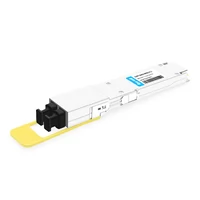 NVIDIA MMS4X00-NM-FLT Compatible 800G Twin-port OSFP 2x400G Flat Top PAM4 1310nm 500m DOM Dual MTP/MPO-12 SMF Optical Transceiver Module
$1200.00
NVIDIA MMS4X00-NM-FLT Compatible 800G Twin-port OSFP 2x400G Flat Top PAM4 1310nm 500m DOM Dual MTP/MPO-12 SMF Optical Transceiver Module
$1200.00
-
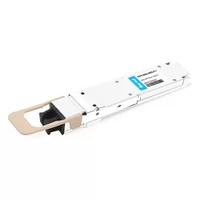 NVIDIA MMA4Z00-NS-FLT Compatible 800Gb/s Twin-port OSFP 2x400G SR8 PAM4 850nm 100m DOM Dual MPO-12 MMF Optical Transceiver Module
$850.00
NVIDIA MMA4Z00-NS-FLT Compatible 800Gb/s Twin-port OSFP 2x400G SR8 PAM4 850nm 100m DOM Dual MPO-12 MMF Optical Transceiver Module
$850.00
-
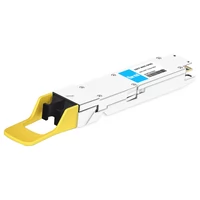 NVIDIA MMS4X00-NM Compatible 800Gb/s Twin-port OSFP 2x400G PAM4 1310nm 500m DOM Dual MTP/MPO-12 SMF Optical Transceiver Module
$1100.00
NVIDIA MMS4X00-NM Compatible 800Gb/s Twin-port OSFP 2x400G PAM4 1310nm 500m DOM Dual MTP/MPO-12 SMF Optical Transceiver Module
$1100.00
-
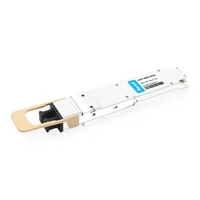 NVIDIA MMA4Z00-NS Compatible 800Gb/s Twin-port OSFP 2x400G SR8 PAM4 850nm 100m DOM Dual MPO-12 MMF Optical Transceiver Module
$750.00
NVIDIA MMA4Z00-NS Compatible 800Gb/s Twin-port OSFP 2x400G SR8 PAM4 850nm 100m DOM Dual MPO-12 MMF Optical Transceiver Module
$750.00
-
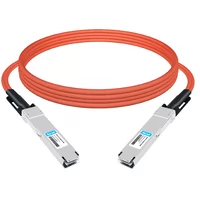 NVIDIA MCA4J80-N003-FLT Compatible 3m (10ft) 800G Twin-port 2x400G OSFP to 2x400G OSFP InfiniBand NDR Active Copper Cable, Flat top on one end and Flat top on the other
$600.00
NVIDIA MCA4J80-N003-FLT Compatible 3m (10ft) 800G Twin-port 2x400G OSFP to 2x400G OSFP InfiniBand NDR Active Copper Cable, Flat top on one end and Flat top on the other
$600.00
-
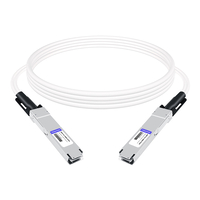 NVIDIA MCP4Y10-N002-FLT Compatible 2m (7ft) 800G Twin-port 2x400G OSFP to 2x400G OSFP InfiniBand NDR Passive DAC, Flat top on one end and Flat top on the other
$300.00
NVIDIA MCP4Y10-N002-FLT Compatible 2m (7ft) 800G Twin-port 2x400G OSFP to 2x400G OSFP InfiniBand NDR Passive DAC, Flat top on one end and Flat top on the other
$300.00
-
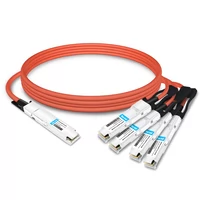 NVIDIA MCA7J75-N004 Compatible 4m (13ft) 800G Twin-port OSFP to 4x200G QSFP112 InfiniBand NDR Breakout Active Copper Cable
$900.00
NVIDIA MCA7J75-N004 Compatible 4m (13ft) 800G Twin-port OSFP to 4x200G QSFP112 InfiniBand NDR Breakout Active Copper Cable
$900.00
-
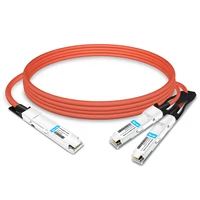 NVIDIA MCA7J65-N004 Compatible 4m (13ft) 800G Twin-port OSFP to 2x400G QSFP112 InfiniBand NDR Breakout Active Copper Cable
$800.00
NVIDIA MCA7J65-N004 Compatible 4m (13ft) 800G Twin-port OSFP to 2x400G QSFP112 InfiniBand NDR Breakout Active Copper Cable
$800.00
-
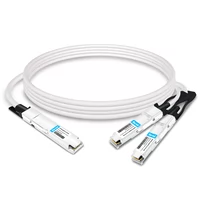 NVIDIA MCP7Y10-N001 Compatible 1m (3ft) 800G InfiniBand NDR Twin-port OSFP to 2x400G QSFP112 Breakout DAC
$165.00
NVIDIA MCP7Y10-N001 Compatible 1m (3ft) 800G InfiniBand NDR Twin-port OSFP to 2x400G QSFP112 Breakout DAC
$165.00
-
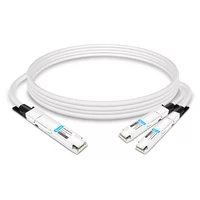 NVIDIA MCP7Y00-N001 Compatible 1m (3ft) 800Gb Twin-port OSFP to 2x400G OSFP InfiniBand NDR Breakout Direct Attach Copper Cable
$175.00
NVIDIA MCP7Y00-N001 Compatible 1m (3ft) 800Gb Twin-port OSFP to 2x400G OSFP InfiniBand NDR Breakout Direct Attach Copper Cable
$175.00
